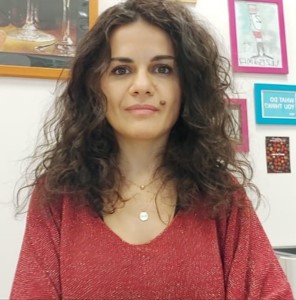Studiare
In questa sezione è possibile reperire le informazioni riguardanti l'organizzazione pratica del corso, lo svolgimento delle attività didattiche, le opportunità formative e i contatti utili durante tutto il percorso di studi, fino al conseguimento del titolo finale.
Calendario accademico
Il calendario accademico riporta le scadenze, gli adempimenti e i periodi rilevanti per la componente studentesca, personale docente e personale dell'Università. Sono inoltre indicate le festività e le chiusure ufficiali dell'Ateneo.
L’anno accademico inizia il 1° ottobre e termina il 30 settembre dell'anno successivo.
Calendario didattico
Il calendario didattico indica i periodi di svolgimento delle attività formative, di sessioni d'esami, di laurea e di chiusura per le festività.
| Periodo | Dal | Al |
|---|---|---|
| I sem. | 2-ott-2017 | 31-gen-2018 |
| I sem - 3° anno | 30-ott-2017 | 31-gen-2018 |
| II sem. | 1-mar-2018 | 15-giu-2018 |
| Sessione | Dal | Al |
|---|---|---|
| Sessione invernale d'esame | 1-feb-2018 | 28-feb-2018 |
| Sessione estiva d'esame | 18-giu-2018 | 31-lug-2018 |
| Sessione autunnale d'esame | 3-set-2018 | 28-set-2018 |
| Sessione | Dal | Al |
|---|---|---|
| Sessione estiva di laurea | 20-lug-2018 | 20-lug-2018 |
| Sessione autunnale di laurea | 27-nov-2018 | 27-nov-2018 |
| Sessione invernale di laurea | 27-mar-2019 | 27-mar-2019 |
| Periodo | Dal | Al |
|---|---|---|
| Vacanze di Natale | 22-dic-2017 | 7-gen-2018 |
| Vacanze di Pasqua | 30-mar-2018 | 3-apr-2018 |
| Festa del Santo Patrono | 21-mag-2018 | 21-mag-2018 |
| VACANZE ESTIVE | 6-ago-2018 | 19-ago-2018 |
Calendario esami
Gli appelli d'esame sono gestiti dalla Unità Operativa Segreteria Corsi di Studio Scienze e Ingegneria.
Per consultazione e iscrizione agli appelli d'esame visita il sistema ESSE3.
Per problemi inerenti allo smarrimento della password di accesso ai servizi on-line si prega di rivolgersi al supporto informatico della Scuola o al servizio recupero credenziali
Per dubbi o domande leggi le risposte alle domande più frequenti F.A.Q. Iscrizione Esami
Docenti

Boselli Maurizio
 maurizio.boselli@univr.it
maurizio.boselli@univr.it
 3478344185
3478344185
 lorenzo.meneghini@univr.it
lorenzo.meneghini@univr.it
 chiara.nardon@univr.it
chiara.nardon@univr.it
Sandri Marco
 marco.sandri@univr.it
marco.sandri@univr.it
Piano Didattico
Il piano didattico è l'elenco degli insegnamenti e delle altre attività formative che devono essere sostenute nel corso della propria carriera universitaria.
Selezionare il piano didattico in base all'anno accademico di iscrizione.
1° Anno
| Insegnamenti | Crediti | TAF | SSD |
|---|
2° Anno Attivato nell'A.A. 2018/2019
| Insegnamenti | Crediti | TAF | SSD |
|---|
3° Anno Attivato nell'A.A. 2019/2020
| Insegnamenti | Crediti | TAF | SSD |
|---|
| Insegnamenti | Crediti | TAF | SSD |
|---|
| Insegnamenti | Crediti | TAF | SSD |
|---|
| Insegnamenti | Crediti | TAF | SSD |
|---|
Legenda | Tipo Attività Formativa (TAF)
TAF (Tipologia Attività Formativa) Tutti gli insegnamenti e le attività sono classificate in diversi tipi di attività formativa, indicati da una lettera.
Difesa della vite (2019/2020)
Codice insegnamento
4S02740
Crediti
12
Coordinatore
Lingua di erogazione
Italiano
L'insegnamento è organizzato come segue:
PATOLOGIA
Crediti
9
Periodo
Vedi pagina del modulo
Docenti
Vedi pagina del modulo
Obiettivi formativi
------------------------
MM: ENTOMOLOGIA
------------------------
L’insegnamento si propone di fornire le basi sulla biologia dei principali artropodi dannosi alla vite e sulle loro interazioni con la coltura e dei relativi metodi di controllo. Particolare riferimento sarà dato allo studio delle biotecnologie applicate alla difesa della vite ed alle metodiche di lotta biologica ed integrata. Al termine dell’insegnamento lo studente dovrà dimostrare di essere in grado di conoscere e diagnosticare le avversità̀ biotiche della vite legate ai parassiti animali e di sviluppare mezzi razionali ed ecocompatibili di contenimento degli artropodi.
------------------------
MM: PATOLOGIA
------------------------
Lo studente acquisirà conoscenze di base relative alle interazioni pianta-patogneo, ai meccanismi di patogenicità e virulenza e alle risposta di resistenza della pianta. Acquisirà inoltre specifiche competenze riguardo alla diagnosi, prevenzione e terapia delle malattie del vigneto, secondo moderni approcci di controllo dei patogeni e di tutela dell'ambiente.
Programma
------------------------
MM: ENTOMOLOGIA
------------------------
Gli artropodi: caratteristiche e classificazione. Elementi di morfologia, fisiologia ed etologia degli insetti e acari dannosi alla vite. Sistema nervoso, digerente, respiratorio, circolatorio, escretore, riproduttore, endocrino degli insetti. Riproduzione e sviluppo. Rapporti tra insetti e altri organismi. Trasmissione di microrganismi patogeni e virus. Insetti: Biologia, dannosità e controllo delle principali specie di interesse economico in viticoltura (ad es. tignole, fillossera, cicaline, cocciniglie, tripidi). Fitofagi minori della vite. Acari e nematodi: Cenni su biologia, ecologia e dannosità degli acari e nematodi fitofagi della vite Metodi di controllo: Soglie e criteri d’intervento. Lotta biologica ed integrata agli artropodi della vite. Insetticidi: generalità, legislazione, modalità d’impiego. Impatto dei prodotti fitosanitari sulle biocenosi: effetti sugli organismi non bersaglio, resistenza, fitofagi indotti. Mezzi complementari di lotta, agronomica, fisica. Riferimenti legislativi. Biotecnologie applicate alle difesa della vite: feromoni definizione ed applicazioni, mass trapping, RNAi, tecnica del maschio sterile. La conoscenza e la capacità di comprensione sarà sviluppata essenzialmente con lezioni frontali, esercitazioni di laboratorio e studio personale sui testi universitari indicati e sul materiale presentato a lezione che sarà recuperabile su riviste/testi presenti in Biblioteca e/o caricato sulla piattaforma e-learning di Ateneo Durante tutto l’anno accademico, inoltre, sarà disponibile il servizio di ricevimento individuale gestito dal docente (in orari fissati da specifico appuntamento). Gli studenti frequentanti riceveranno alla prima lezione il calendario completo delle attività didattiche con le date e gli argo-menti trattati nelle lezioni di cui verrà fornito l’orario, l’aula e l’indicazione dell’eventuale sospensione per motivi accademici del docente. Testi consigliati: • E. Tremblay (2003) – Entomologia Applicata Vol. I Generalità e mezzi di controllo Ed. Liguori • A. Lucchi (2016) – Note di Entomologia Viticola Ed. Pisa University • N.J. Bostanian, C. Vincent (2012) – Arthropod management in Vineyards: Pests, Approaches and Future Directions Ed. Springer
------------------------
MM: PATOLOGIA
------------------------
PARTE GENERALE Introduzione alla patologia vegetale Evoluzione delle conoscenze in patologia vegetale, interesse scientifico e importanza economica delle malattie. Terminologia fitopatologica: concetto di malattia, ospite e patogeno, infezione. Sintomi e segni, locali e sistemici. Suscettibilità, resistenza, tolleranza. Relazioni nutrizionali: saprofiti, parassiti, (obbligati e facoltativi) simbionti. Classificazione delle malattie Criterio eziologico: Presentazione delle principali classi di patogeni vegetali. Cenni di epidemiologia (triangolo della malattia, condizioni predisponenti alla malattia) Ciclo della malattia: contagio, penetrazione, fase di latenza, colonizzazione, periodo di incubazione, sporulazione, diffusione, conservazione dell’inoculo. Malattie da funghi fitopatogeni Caratteristiche generali dei funghi fitopatogeni Tassonomia e classificazione Il processo infettivo, ciclo della malattia Fattori di virulenza e patogenicità, enzimi litici, tossine, ormoni, ricerca di fattori di patogenicità. Malattie da procarioti Caratteristiche generali dei batteri fitopatogeni: struttura della cellula batterica, tassonomia dei batteri fititopatogeni Processo infettivo, fattori di patogenicità e virulenza Caratteristiche generali dei fitoplasmi e classificazione Processo infettivo, sintomatologia Malattie da virus e da viroidi Caratteristiche generali del virus Forme e dimensioni Struttura e composizione Penetrazione, replicazione, traslocazione Sintomi Epidemiologia: Trasmissione per contatto, per parti di piante, trasmissione mediante vettori, (trasmissione persistente , NP, SP) da nematodi, cocciniglie, afidi. Nomenclatura e classificazione Viroidi: cenni trasmissione, replicazione Diagnostica: Isolamenti e postulati di Kock Tecniche biochimiche , sierologiche e molecolari Utilizzo di specie indicatrici La protezione delle piante dalle malattie Legislazione fitopatologia e organizzazione dei servizi fitosanitari, quarantena, eradicazione. Selezione sanitaria e certificazione. Mezzi agronomici di prevenzione Mezzi fisici, solarizzazione, termoterapia Controllo biologico Mezzi chimici: caratteristiche generali dei presidi sanitari e modalità di impiego. Principali classi di prodotti sistemici, citotropici, di copertura. Tossicità e relativa legislazione. Norme per la commercializzazione e l’impiego. Mezzi genetici: Le risposte della pianta alle infezioni dei fitopatogeni Riconoscimento ospite patogeno. Elicitori e geni di resistenza Meccanismi di difesa, pre-costituiti e post infezionali. Resistenze sistemiche. Applicazioni biotecnologiche alla costituzione di piante resistenti Difesa integrata Epidemiologia: cenni di epidemiologia ed esempi modelli previsionali PARTE SPECIALE Malattie da funghi fitopatogeni Peronospora Mal bianco Botrite Escoriosi. Marciumi radicali (Armillaria , Rosellinia) Malattie del legno: esca, eutipiosi, Tracheoverticillosi Marciumi anomali: Marciume nero, Antracnosi, Carie bianca, agenti di marciume acido. Malattie da procarioti: A. tumefaciens, A. vitis , Xylophilus ampelinus, Xylella fastidiosa. Rischi epidemici , interventi preventivi e curativi . Candidatus Phytoplasma spp.: agenti di fitoplasmosi della vite epidemiologia, interventi di prevenzione e difesa. Malattie da virus: Complesso dell’arricciamento, Accartocciamento fogliare , Disaffinità d’innesto, Maculatura infettiva. Cenni a malattie da viroidi.
Bibliografia
| Autore | Titolo | Casa editrice | Anno | ISBN | Note |
|---|---|---|---|---|---|
| Belli Giuseppe | Elementi di Patologia vegetale | Piccin-Nuova Libraria | 2015 | ||
| Agrios G.N. | Plant Pathology (Edizione 4) | Harcourt Academic Press | 1997 | 0120445646 | |
| N.J. Bostanian, C. Vincent | Arthropod management in Vineyards: Pests, Approaches and Future Directions | Springer | 2012 | ||
| E. Tremblay | Entomologia Applicata Vol. I Generalità e mezzi di controllo | Liguori | 2003 | ||
| A. Lucchi | Note di Entomologia Viticola | Ed. Pisa University | 2016 |
Modalità d'esame
------------------------
MM: ENTOMOLOGIA E PATOLOGIA VEGETALE
------------------------
L’accertamento dei risultati d’apprendimento si svolgerà con modalità orale in forma di domande sia per gli studenti frequentanti che per i non frequentanti. L’obiettivo della prova consiste nell’accertare la conoscenza degli argomenti affrontati nel programma. Saranno inoltre valutate la profondità e l’ampiezza delle conoscenze acquisite e la capacità di collegare in forma sistemica e critica le conoscenze. La prova orale riguarda potenzialmente tutti gli argomenti del programma. La valutazione finale è espressa in trentesimi. Per determinare il voto complessivo dell’esame verrà calcolata la media ponderata delle votazioni ottenute nei due moduli (entomologia e patologia)
Tipologia di Attività formativa D e F
Insegnamenti non ancora inseriti
Prospettive
Avvisi degli insegnamenti e del corso di studio
Per la comunità studentesca
Se sei già iscritta/o a un corso di studio, puoi consultare tutti gli avvisi relativi al tuo corso di studi nella tua area riservata MyUnivr.
In questo portale potrai visualizzare informazioni, risorse e servizi utili che riguardano la tua carriera universitaria (libretto online, gestione della carriera Esse3, corsi e-learning, email istituzionale, modulistica di segreteria, procedure amministrative, ecc.).
Entra in MyUnivr con le tue credenziali GIA: solo così potrai ricevere notifica di tutti gli avvisi dei tuoi docenti e della tua segreteria via mail e a breve anche tramite l'app Univr.
Prova Finale
Per essere ammessi alla prova finale occorre avere conseguito tutti i crediti nelle attività formative previste dal piano degli studi. La laurea in Scienze e tecnologie viticole ed enologiche viene conseguita dallo studente superando con esito positivo l'esame di laurea e completando in questo modo i 180 CFU stabiliti dal suo piano di studi.
La prova finale consisterà nella discussione di un elaborato scritto ed in una proclamazione solenne ed è finalizzata all'approfondimento da parte dello studente di uno specifico argomento tecnico scientifico che dovrà essere affrontato utilizzando metodologie proprie dell'indagine scientifica. La stesura dell'elaborato e la sua presentazione in sede pubblica costituiscono un ulteriore elemento di crescita delle capacità dello studente.
Su proposta del relatore la tesi finale/elaborato può essere compilata e discussa in lingua straniera.
La forma dell'esame viene concordata tra lo studente e il docente referente (relatore) il quale è membro della commissione di laurea La valutazione dell'esame è basata sul livello di approfondimento dimostrato dallo studente, sulla chiarezza espositiva e sulla capacità dello studente di inquadrare l'argomento assegnato in un contesto più ampio. Può essere relatore un docente del corso di laurea o altro docente del dipartimento di Biotecnologie e Economia Aziendale, o un altro docente dell'Ateneo previa autorizzazione del collegio didattico del corso di laurea.
Il voto di ammissione è determinato rapportando la media degli esami di profitto a 110. Per media degli esami di profitto si intende la media ponderata sui crediti.
Al voto di ammissione si aggiungono:
3 punti per la laurea in corso
1 punto per la laurea nel primo anno fuori corso
2 punti per una media ≥ 99/110
0,33 punti per ogni lode
2 punti per esperienze all'estero nell'ambito di ERASMUS-SOCRATES.
ll voto viene arrotondato all'intero più vicino, e a parità di distanza, all'intero superiore.
La Commissione di Laurea attribuisce per la prova finale un punteggio da 0 a 4 punti, in base al livello di approfondimento dimostrato dallo studente, alla chiarezza espositiva e alla capacità dello studente di inquadrare l'argomento assegnato in un contesto più ampio. L'esposizione dovrà comprendere anche una breve relazione sull'attività di tirocinio. Il punteggio finale di Laurea è espresso in centodecimi con eventuale lode. Il punteggio minimo per il superamento dell'esame finale è di 66/110. La commissione di laurea per la prova finale attribuisce un punteggio da 0 a 4 punti. L'attribuzione della lode, nel caso di una votazione almeno pari a 110/110, è a discrezione della commissione di laurea e viene attribuita solo se il parere dei membri della commissione è unanime. Le modalità e le scadenze per la presentazione della domanda di laurea e del relativo elaborato sono stabilite dal collegio didattico e dalle segreterie competenti.
Alla prova finale sono assegnati 3 CFU.
Modalità di frequenza
Come riportato nel Regolamento Didattico, la frequenza è obbligatoria per le esercitazioni pratiche e di laboratorio (si vedano i corsi con laboratorio nell'allegato), salvo diverse disposizione stabilite dal collegio didattico.
PROSPETTO DEI CORSI CON LABORATORIO
Nel documento allegato sono specificati i corsi, divisi per anno, che prevedono CFU di esercitazione/laboratorio per i quali la frequenza è obbligatoria per poter essere ammessi all'esame.
Documenti
| Titolo | Info File |
|---|---|
|
|
pdf, it, 121 KB, 18/10/23 |



























